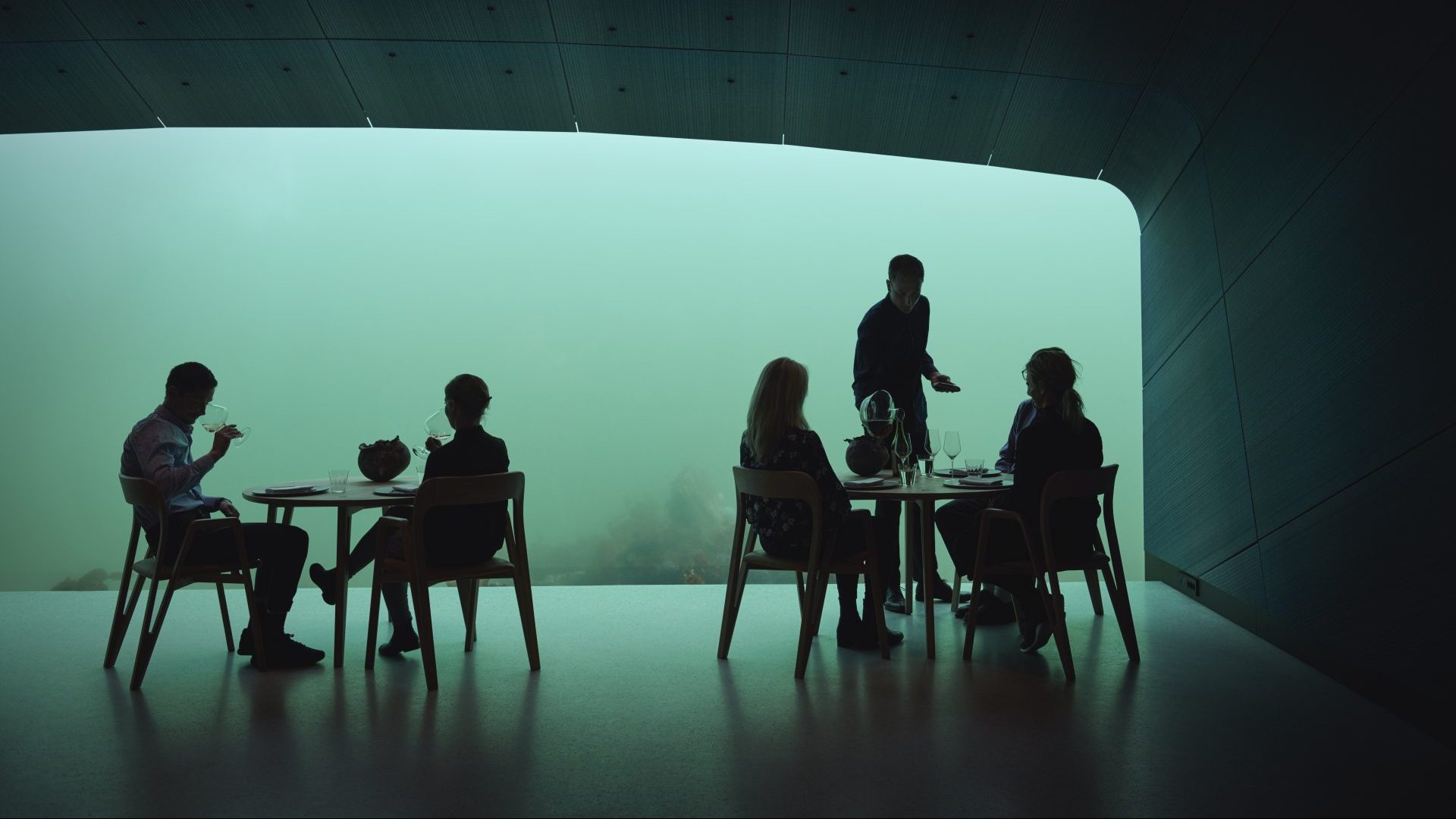We’re at dinner in Norway, waiting for the fish to arrive. And just as the sun begins to set, here they come. But not on plates.
As the shimmering reflections on the water’s surface some metres above us begins to fade, the restaurant’s subtle LEDs light up the brightest show in town. We gaze through the giant picture window as the ubiquitous little jellyfish and the occasional sild, flashing silver, begin to be joined by larger creatures: cod, ling, wrasse…
Since 2019 you have been able to share a meal in southern Norway with sea creatures, six metres beneath the waves on a rocky shoreline in the small village of Båly. Welcome to Under, an £8m private venture in the sleepy commune of Lindesnes, at the very southernmost tip of Norway on the country’s azure-watered holiday coast. It is the largest underwater restaurant in the world, beating those already established in the Emirates and the Maldives, and the only one in temperate climes.
The name Under is actually a play on words in Norwegian, meaning both “beneath” and “wonder” and we found ourselves in both awe and amazement as the 18-course Immersion tasting menu slowly unfolded before us as the long evening evolved.
Of course, Michelin star dining is not and nor need it be synonymous with city life: think of the abundance of Michelin stars in the English Lake District or on the Scottish periphery – or the two-star Koks in a lonely valley in the Faroe Islands and its latest offshoot, in Greenland. Increasingly you may think of the chefs following the produce, and at Under – with the exception of the ancient mahogany clams from Bergen and most (but not all) of the paired wines – everything is sourced within 20 miles or so and often harvested daily from the sea by the kitchen team themselves.
At Under, dining start times are staggered and for us it all begins as early as 6pm, with our intriguing amuse-bouches presented in the cosy bar area, level with the surface of the sea, which rises and falls beyond the tall glass window that extends down into the kitchen some metres below. Then you walk downstairs, below the surface, for the main event.
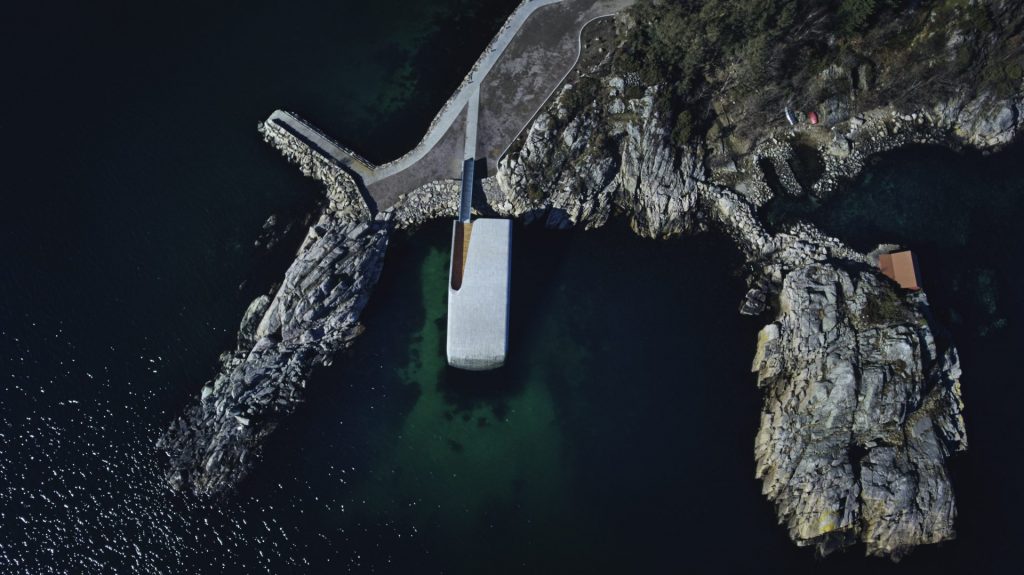
Martinsen
Of course, fine dining is far more than the taste of the food: it is the admiration for the imagination of the chefs; it is that extraordinary pampered service; it is the whole experience as “entertainment” during what may be a once-in-a-lifetime occasion.
Chef Nicolai Ellitsgaard (himself “sourced” from nearby Kristiansand) plans his menu daily around locally available ingredients: only the 100-year-old clams come from “far away” (Bergen). And the emphasis is very much on the “amuse”, as kitchen confections mimic marine creatures.
Even the “Submerged” paired “wine” selection includes a local sour-fruit wine from Lindheim Ølkompani, in nearby Telemark, and a mead from Mjøderiet, near Bergen. Other staff, however, are far from locally sourced and reflect the international nature of haute cuisine: our Japanese sakespecialist somelière was from Mexico and co-owner Stig Ubostad reminded me that attracting and retaining the very best kitchen and serving staff is always a challenge. At times it felt as though there was one waiter or waitress for every diner, so attentive were they all.
As the venue, which opened only in 2019, edged its way through Covid with a total of just five weeks closure, it also gained its first Michelin star last year. Now, as international travel begins to return to the menu, it is starting to lure those who “collect” Michelin star dining like trainspotters. On the evening of my visit, the marine biologist on the next table was from Sweden and proved a real asset, with her specialist knowledge of algae and other things submarine, and a group of young men had made the four-day drive all the way from North Cape, at the very opposite end of Norway.
I found myself wondering just how you work out what to charge diners after you’ve forked out £8m to build your restaurant, and drew from Ubostad no more than a wry smile and the none-too-expansive comment that “working in fine dining is quite difficult”, while emphasising that the entire venture is built upon solid business and tourism foundations.
Under evolved in just 14 months in 2018 and 2019 from the vision of Ubostad and his brother, Gaute, the fourth generation of successful hotel and water park owners in nearby Lyngdal. Having acquired a large but failing hotel just across the water from Under, in 2013, they decided they needed to create a really powerful reason for visitors to come. Under was one of three ideas they looked at and their vision was realised entirely using local contractors and craftsmen.
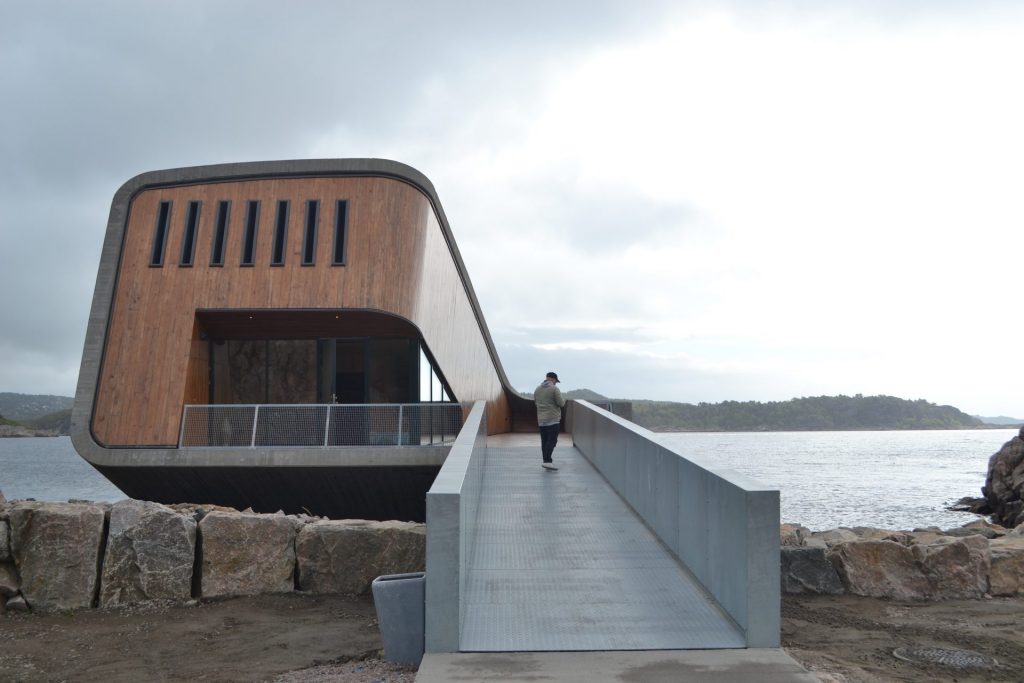
The giant steel and concrete box was built right outside the hotel and floated across to its permanent resting place, where it sits at a steep angle, one end submerged and the other with its Norwegian oak façade standing proud above the water and bringing to mind the lid of a grand piano. Under’s concrete and steel structure weighs in at 1,650 tonnes, with the fixtures and fittings bringing it up to 2,450 tonnes. At a cost of 80m kroner (a little under £8m), including some government support, it represents an extraordinarily bold venture for a family business, but reflects the Ubostads’ determination to put Norway’s very southern tip firmly on the visitor map: a tough call in a country more famed for fjords, midnight sun and Northern Lights.
“The family’s hotel in Lyngdal was created by my great grandmother, who built it brick by brick in 1930. In the last 30 years we have had a lot of different projects, leading up to taking over the hotel here in Båly in 2013, which in turn led us to look at different scenarios for attracting more visitors,” Ubostad said.
“We needed to look at what we could do for the local economy to get the region on the radar internationally, given that the south coast is not the most frequented by the international visitor, who tends to head for the better-known attractions.”
Once the Ubostads were committed to Under, things moved remarkably quickly, with work on both the seabed and the steel and concrete restaurant shell starting simultaneously in January 2018, using local contractors throughout. “In everything we do we think local and we don’t do investment, apart from locally.”
Now the bay where Under sits is closed to fishing and underwater “gardening” work is aimed at encouraging the greatest possible diversity of piscine visitors. The display becomes more colourful when sea temperatures rise above nine or 10 degrees in summer.
On my visit, the number of piscine observers increased as darkness fell. They were watching us, the mere humans, from just beyond the thick acrylic cinema screen of a viewing window, made by Reynolds Polymer Technology of Colorado. There was a desire that the show might never end. The food was, inevitably, superb. From the tender little “ocean peas” plucked from the seaweed on the seabed around the restaurant and only in season for three weeks, to the fish pudding, featuring fermented flour and aged herring roe, to those mahogany clams, filled with a foam of fermented tomato and elderflower, each course presented a new wonder.
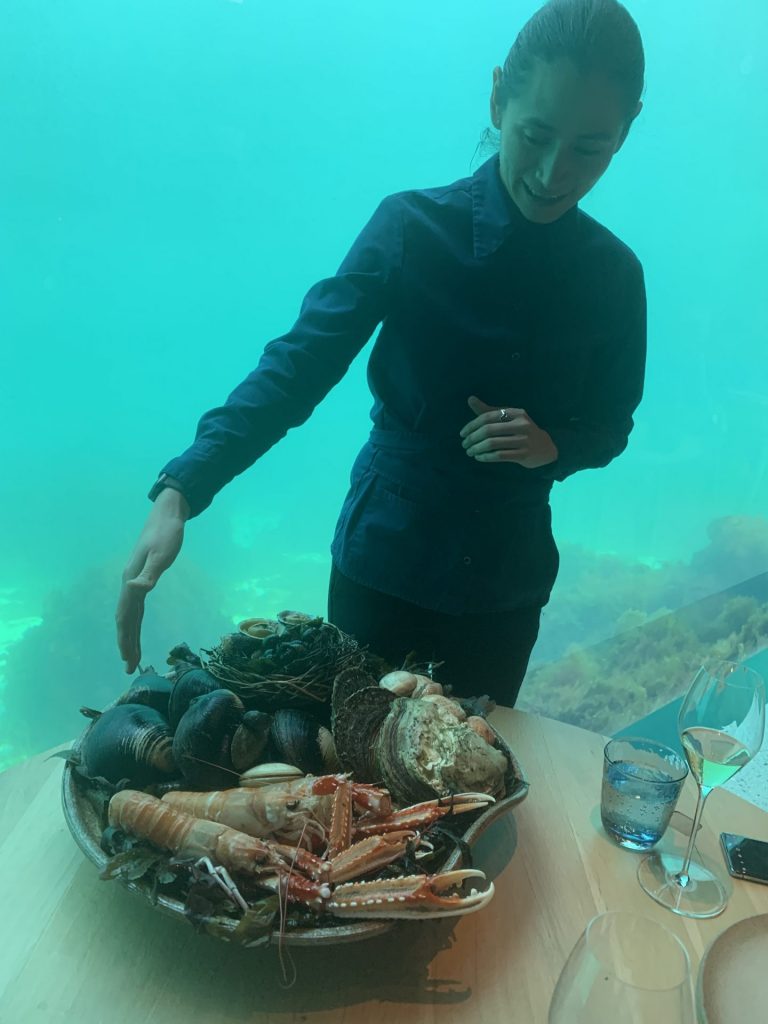
And then there is the pure showmanship: a limpet arrived, sitting on a bed of seaweed and pebbles. Except it wasn’t: the “shell” had been intricately crafted from a crispbread mix. A dish of “mussels” practised a similar deception.
Lindesnes (population 4,850) is not a deprived area, even by Norway’s generous standards, but a coastline on the same latitude as Orkney is never going to win a sun and sand competition against the lure of Mediterranean packages. Fishing and the extraction of boulders from the harbour floor for export as sea defences in the Netherlands and the UK have both been on the wane. The arrival of Under has truly put the commune on the map.
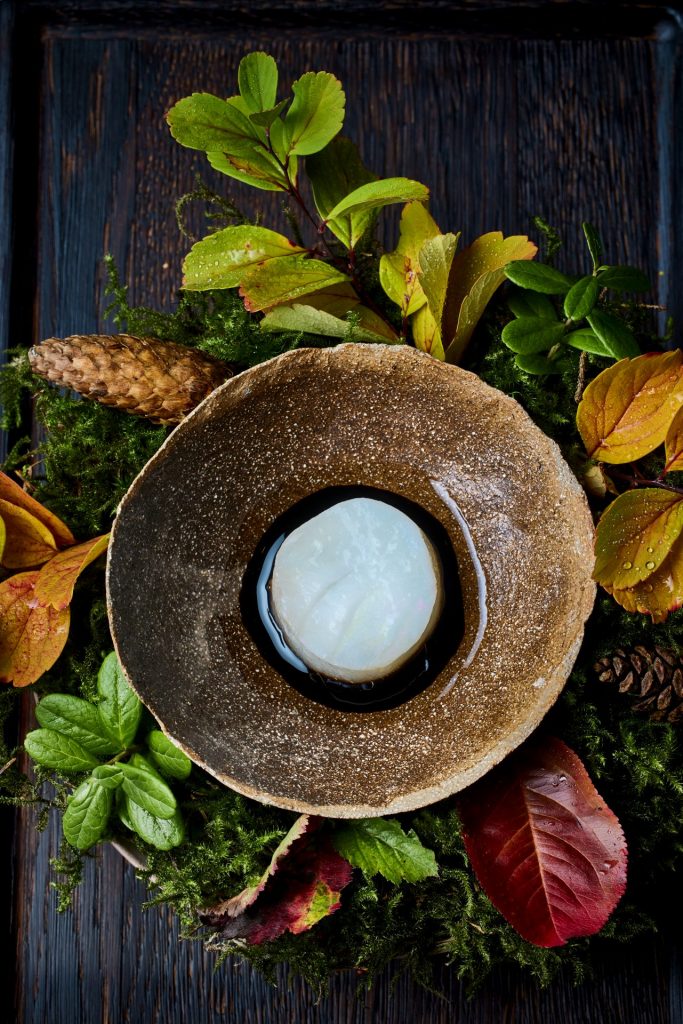
The local Labour mayor of the wider Kommune (population 23,046), Even Sagebakken, puts it like this: “The establishment of Under has had an enormous effect on our municipality – Under has been the most talked-about tourism news in Norway ever, and the marketing value of being featured in all the major magazines digitally and in print worldwide is almost impossible to measure in money.
“It has also led to a greater awareness of sustainability throughout the destination and the use of local food in other restaurants. Under has employees from all over the world, but the audience they attract gives a positive effect to local businesses and gives them the opportunity to grow and offer experiences to an even more financially strong customer group,” says Sagebakken.
“Smaller places like us are completely dependent on entrepreneurs like Stig Ubostad and his family who invest so professionally and heavily in tourism.”
The challenge of competing with Norway’s more famous natural attractions is one to which Under has risen supremely, emerging from the deep to change the economy of a formerly sleepy fishing village.
Under’s Immersion tasting menu with the Submerged paired wines comes in at 5,000 kroner per person, or a little over £400, with 1,000 kroner of this paid in advance (usually three months or more) as a deposit. Reservations can be made here. There is a long waiting list.

